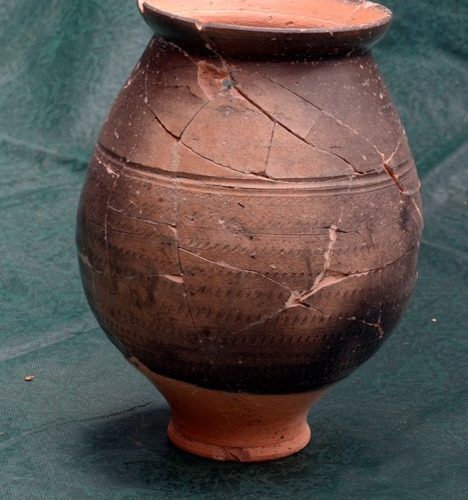Stone Age to Iron Age 5: Terra Rubra beaker
This is a drinking beaker made from a red clay called terra rubra, which means ‘red earth' in Latin.
This type of pottery was common in the Roman Empire. It was produced in northern Gaul (modern France) during the late 1st century BC and 1st century AD.
This example comes from Folkestone’s Iron Age site on the East Cliff. It was discovered during excavations in 2010-2013. The digs were undertaken by Canterbury Archaeological Trust for the ‘A Town Unearthed’ project.
The beaker sits on a pedestal foot. It is incised (cut) with a delicate pattern of horizontal lines around the body of the beaker. The potter who made it did this with a small knife or sharp stick, while the pottery was still damp.
In late Iron Age Britain, these beakers were used at feasts. Amphorae (storage jars for wine) were also used, as well as wine strainers (to remove any grit or sediment).
Feasting was important in Iron Age society. Chieftains held feasts to display their wealth and status and to maintain their warriors’ loyalty. There were also feasts during religious ceremonies.
The discovery of this beaker at the Iron Age site in Folkestone is evidence that people living here had close links with the Roman Empire, which was just across the Channel in Gaul, before the Roman conquest of Britain in 43 AD.
Fascinating Fact
Some Roman authors were horrified about how much Iron Age people drank, because they didn’t follow the Roman habit of adding water to their wine. One even commented that Iron Age men used their long, thick moustaches as wine strainers!

